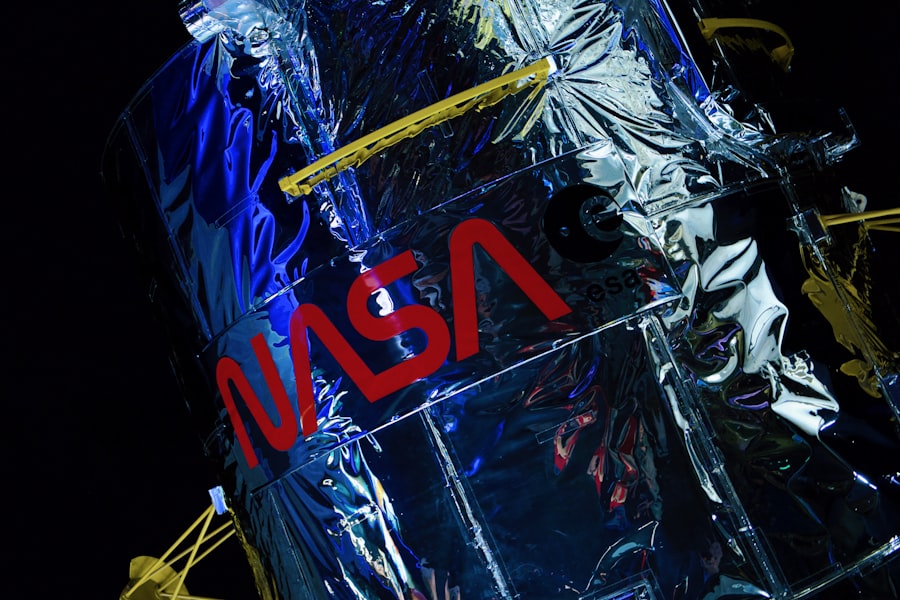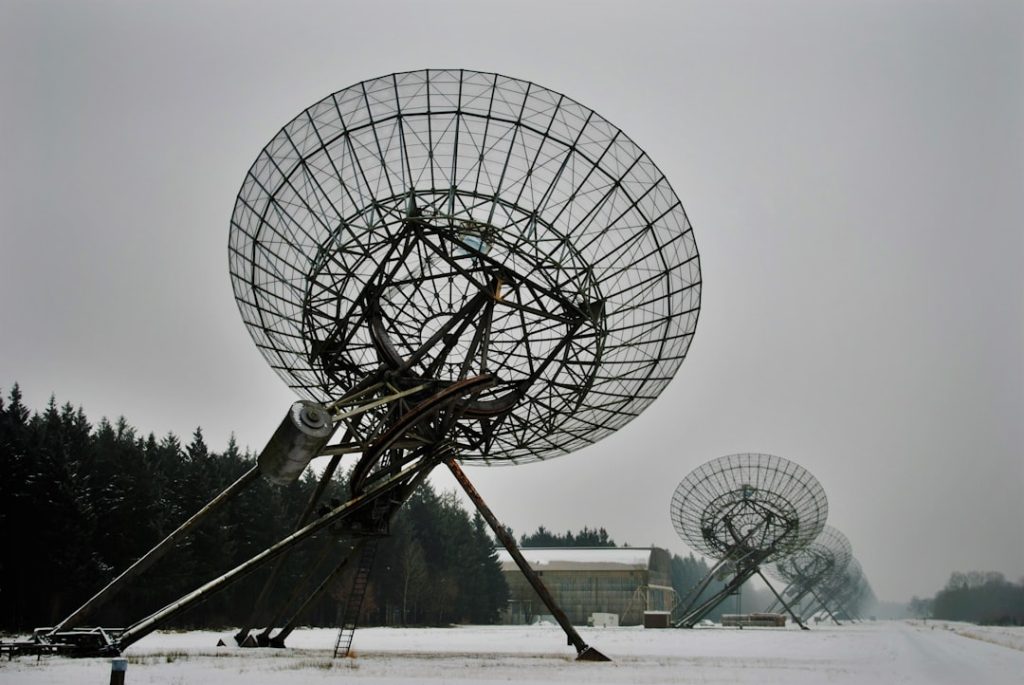The universe, an expansive tapestry of celestial bodies and cosmic phenomena, has captivated human imagination for millennia. From the twinkling stars that adorn our night sky to the vast, swirling galaxies that populate the cosmos, the wonders of space are both awe-inspiring and humbling. The sheer scale of the universe is difficult to comprehend; it is estimated to be around 93 billion light-years in diameter, containing billions of galaxies, each with millions or even billions of stars.
This immense expanse is not just a backdrop for our existence but a dynamic environment filled with mysteries waiting to be unraveled. As we embark on a journey through space, we encounter a myriad of phenomena that challenge our understanding of physics and the nature of reality. The beauty of nebulae, the remnants of stellar explosions, showcases the life cycle of stars, while the intricate dance of planets around their suns reveals the delicate balance of gravitational forces.
Each celestial body tells a story, from the fiery surface of the sun to the icy rings of Saturn. The exploration of these wonders has been propelled by advancements in technology, allowing us to send probes and telescopes far beyond our home planet, capturing images and data that expand our knowledge and fuel our curiosity.
Key Takeaways
- The universe is full of wonders, from the vastness of space to the mysteries of black holes and dark matter.
- Scientists are working to unravel the mysteries of black holes and dark matter, which hold the key to understanding the universe.
- The search for extraterrestrial life continues, as scientists explore the possibility of life beyond Earth.
- Quantum mechanics provides a fascinating look into the subatomic world, revealing the power and complexity of the universe at its smallest scale.
- The Big Bang theory and beyond offer insights into the origins of the universe, shaping our understanding of its evolution and future.
Unraveling the Mysteries of Black Holes and Dark Matter
Black holes represent one of the most enigmatic phenomena in astrophysics. Formed from the remnants of massive stars that have undergone gravitational collapse, black holes possess gravitational fields so strong that nothing, not even light, can escape their grasp. The boundary surrounding a black hole, known as the event horizon, marks the point of no return.
Once an object crosses this threshold, it is inexorably drawn into the singularity at the center, where density becomes infinite and the laws of physics as we know them cease to apply. The study of black holes challenges our understanding of space and time, leading to profound questions about the nature of reality itself. In addition to black holes, dark matter constitutes another significant mystery in our universe.
Although it cannot be observed directly, dark matter is believed to make up approximately 27% of the universe’s total mass-energy content. Its presence is inferred from gravitational effects on visible matter, such as galaxies and galaxy clusters. For instance, the rotation curves of galaxies reveal that they spin at speeds that cannot be accounted for by the visible mass alone; thus, dark matter is posited to provide the additional gravitational pull necessary to hold these galaxies together.
The quest to understand dark matter involves sophisticated experiments and theoretical models, as scientists strive to uncover its elusive nature and role in cosmic evolution.
The Search for Extraterrestrial Life: Are We Alone in the Universe?

The question of whether we are alone in the universe has intrigued humanity for centuries. With billions of stars in our galaxy alone, many of which host planets in their habitable zones, the possibility of extraterrestrial life seems plausible. The search for life beyond Earth encompasses a variety of scientific disciplines, including astronomy, biology, and planetary science.
Missions such as NASA’s Kepler Space Telescope have identified thousands of exoplanets, some located in regions where conditions may be suitable for life as we know it. Astrobiology, a field dedicated to studying the potential for life beyond Earth, examines extreme environments on our own planet—such as hydrothermal vents and acidic lakes—to understand how life might exist in similarly harsh conditions elsewhere in the cosmos. The discovery of extremophiles—organisms that thrive in extreme temperatures, pressures, or chemical environments—has expanded our definition of habitable conditions.
Furthermore, missions to Mars and the icy moons of Jupiter and Saturn aim to uncover signs of past or present life by analyzing soil samples and subsurface oceans. As we continue to explore our solar system and beyond, each discovery brings us closer to answering one of humanity’s most profound questions.
The Power of Quantum Mechanics: Understanding the Subatomic World
| Topic | Metrics |
|---|---|
| Quantum Mechanics | Understanding the behavior of particles at the subatomic level |
| Quantum Superposition | Particles existing in multiple states simultaneously |
| Quantum Entanglement | Correlation between particles regardless of distance |
| Quantum Tunneling | Particles passing through energy barriers |
Quantum mechanics represents a fundamental shift in our understanding of physics, governing the behavior of particles at the subatomic level. Unlike classical physics, which describes macroscopic phenomena with deterministic laws, quantum mechanics introduces concepts such as superposition and entanglement that defy intuitive understanding. For instance, particles can exist in multiple states simultaneously until measured—a phenomenon famously illustrated by Schrödinger’s cat thought experiment.
This inherent uncertainty challenges our perceptions of reality and has profound implications for fields ranging from computing to cryptography. Entanglement further complicates our understanding of quantum mechanics. When two particles become entangled, their states become interdependent regardless of the distance separating them.
This means that a change in one particle’s state instantaneously affects its entangled partner, a phenomenon that Einstein famously referred to as “spooky action at a distance.” Such properties have led to groundbreaking advancements in quantum computing, where qubits can perform complex calculations at speeds unattainable by classical computers. As researchers delve deeper into quantum mechanics, they continue to uncover new layers of complexity that could revolutionize technology and reshape our understanding of the universe.
Exploring the Origins of the Universe: Big Bang Theory and Beyond
The origins of the universe are encapsulated in the Big Bang theory, which posits that approximately 13.8 billion years ago, all matter and energy were concentrated in an infinitely dense point before rapidly expanding into what we now observe as our universe. This expansion continues today, evidenced by the redshift observed in distant galaxies—a phenomenon that indicates they are moving away from us. The cosmic microwave background radiation serves as a remnant echo of this explosive event, providing a snapshot of the universe when it was just 380,000 years old.
While the Big Bang theory provides a compelling framework for understanding cosmic evolution, it also raises questions about what preceded this monumental event. Some theories propose that our universe is part of a multiverse—a collection of multiple universes with varying physical laws and constants. Others suggest cyclical models where universes undergo endless cycles of expansion and contraction.
These hypotheses challenge traditional notions of time and existence, prompting scientists to explore concepts that extend beyond empirical observation. As we probe deeper into cosmic history through advanced telescopes and particle accelerators, we inch closer to unraveling these profound mysteries.
The Intriguing World of Time Travel and Wormholes

Time travel has long been a staple of science fiction literature and film, yet it also finds its roots in theoretical physics. According to Einstein’s theory of relativity, time is not a constant but rather a dimension intertwined with space—forming what is known as spacetime. This framework allows for intriguing possibilities regarding time travel; for instance, traveling at speeds approaching that of light could theoretically result in time dilation, where time passes more slowly for the traveler compared to those remaining stationary.
Wormholes present another fascinating concept related to time travel. These hypothetical passages through spacetime could create shortcuts between distant points in the universe or even different times. While wormholes are solutions to Einstein’s equations in general relativity, their existence remains speculative due to challenges such as stability and traversability.
Some physicists propose that exotic matter with negative energy density could stabilize a wormhole’s throat; however, such materials have yet to be discovered or created. The exploration of these concepts not only fuels scientific inquiry but also ignites imagination about humanity’s potential to traverse time and space.
The Fascinating World of Astrobiology: Life Beyond Earth
Astrobiology stands at the intersection of biology and astronomy, focusing on understanding life’s potential beyond Earth. This interdisciplinary field investigates how life originated on our planet and how similar processes might occur elsewhere in the universe. By studying extreme environments on Earth—such as acidic lakes or deep-sea hydrothermal vents—scientists gain insights into how life can adapt and thrive under conditions previously thought inhospitable.
The search for extraterrestrial life extends beyond mere speculation; it involves rigorous scientific inquiry and exploration. Missions targeting Mars aim to uncover evidence of past microbial life through geological analysis and sample return missions. Additionally, missions to icy moons like Europa and Enceladus focus on subsurface oceans that may harbor conditions suitable for life.
The discovery of organic molecules on comets and asteroids further supports the idea that life’s building blocks are widespread throughout the cosmos. As we continue to explore these frontiers, astrobiology not only seeks answers about life beyond Earth but also deepens our understanding of our own origins.
The Future of Space Exploration: Interstellar Travel and Colonization
The future of space exploration holds tantalizing possibilities that extend far beyond our solar system. Interstellar travel—the concept of traveling between stars—has long been a dream for scientists and enthusiasts alike. While current propulsion technologies limit us to within our solar system, theoretical concepts such as warp drives or solar sails offer potential pathways for reaching distant star systems within human lifetimes.
These ideas often draw inspiration from existing physics while pushing boundaries into speculative realms. Colonization represents another ambitious goal for humanity’s future in space. As Earth faces challenges such as climate change and resource depletion, establishing human settlements on other celestial bodies may become increasingly viable.
Mars has emerged as a primary candidate due to its relative proximity and potential for resource utilization; missions like SpaceX’s Starship aim to facilitate human settlement on the Red Planet within this decade. Additionally, concepts for terraforming—altering a planet’s environment to make it more Earth-like—spark discussions about long-term colonization strategies. As we stand on the brink of a new era in space exploration, humanity’s quest for knowledge continues to drive innovation and discovery.
Each step taken into the cosmos not only expands our understanding but also redefines our place within this vast universe—a journey filled with wonder and possibility that beckons us forward into the unknown.


